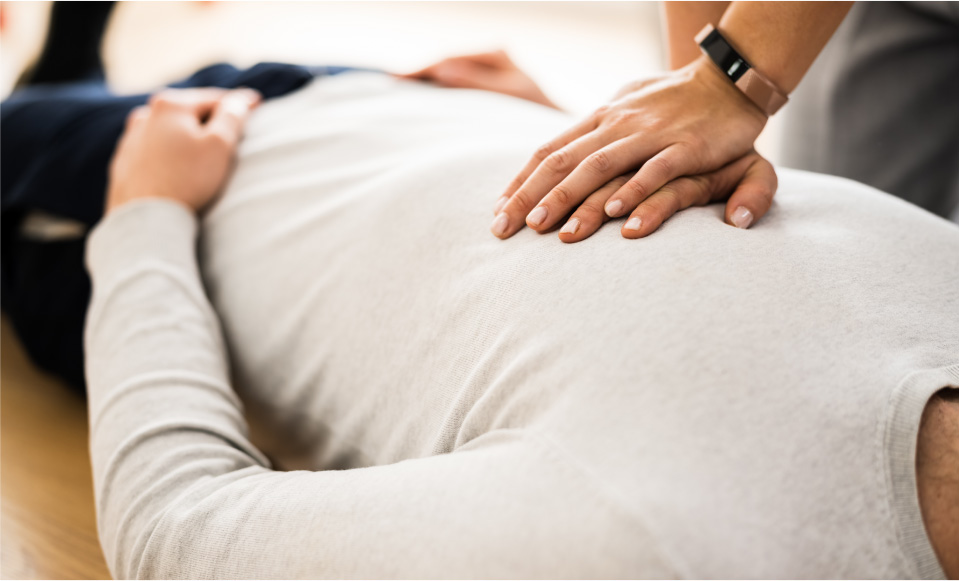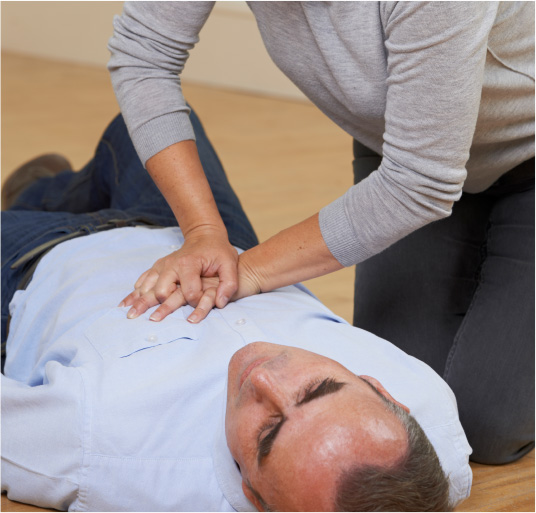How to Perform CPR
What is CPR?
Cardiopulmonary resuscitation (CPR) is a lifesaving technique used in emergencies when someone’s heartbeat or breathing stops. It combines chest compressions with ventilation to preserve brain function until medical help arrives. Quick action and proper technique are critical to increase the chances of survival and recovery.
Knowing how to perform CPR can mean the difference between life and death. It’s a skill that empowers you to act quickly and effectively during cardiac or respiratory emergencies. Whether it happens at home or in public, immediate response matters!

Download Our CPR Guides
When should I start CPR?
Begin CPR immediately if someone is unresponsive and not breathing or not breathing normally. Don’t wait for signs of a pulse. Early chest compressions can dramatically improve the person’s outcome. It’s better to start right away than to hesitate while checking for signals. Every second without oxygen increases the risk of brain damage.
In critical moments like these, fast action can save a life. Even if you’re unsure, starting compressions is usually safer than doing nothing at all. The Emergency Center is always open, ready to deliver fast, expert care the moment you need it most. No lines. No delays.
Types of CPR
There are several types of CPR, each carefully adapted to the specific age, health status, or medical condition of the person in need.
Hands-Only CPR – This simple method involves continuous chest compressions only, ideal for untrained bystanders and sudden adult cardiac arrest cases.
Full CPR With Rescue Breaths – This standard approach includes both compressions and rescue breaths, typically performed by trained responders or certified healthcare professionals.
Advanced CPR – Usually performed by medical teams, it may include defibrillation, advanced airway management, and emergency medication support.

Frequently Asked Questions On CPR
What Are the Signs That Someone Needs CPR?
A person may need CPR if they’re unresponsive, not breathing, or only gasping. Other red flags include a sudden collapse or lack of pulse. Immediate action is crucial in these cases to maintain blood flow and oxygen to vital organs, especially the brain and heart. Recognizing these signs quickly can save lives.
What Should I Do if I’m Not Trained in CPR?
If you haven’t been formally trained, you can still help by performing Hands-Only CPR. Just push hard and fast in the center of the chest, around 100–120 compressions per minute. Avoid mouth-to-mouth if unsure. Your quick response can make a major difference while waiting for emergency professionals.
How Deep Should Chest Compressions Be During CPR?
For adults, chest compressions should be about 2 inches deep to be truly effective. Make sure each firm compression allows the chest to fully recoil. Shallow or inconsistent compressions significantly reduce the chances of survival. Use your full body weight and keep your elbows locked to deliver strong, consistent, and reliable pressure.
How Do I Know if CPR Is Working?
Signs that CPR might actually be working include the person starting to move, gasp, or slowly regain color. However, CPR primarily maintains blood circulation until professionals arrive. Don’t stop until qualified help takes over or the person visibly recovers. Consistent compressions are the most effective support you can provide in that critical moment.
